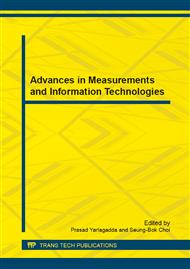p.887
p.891
p.895
p.901
p.906
p.911
p.915
p.919
p.928
Finite Element Analysis for Water Turbine of Horizontal Axis Rotor Wave Energy Converter
Abstract:
Horizontal axis rotor wave energy converter is a new form for utilization of ocean wave energy, and the axis of its water turbine is parallel with the sea level and perpendicular to the direction of wave. This paper employed the linear wave theory and Froude-Krylov presumptive method to calculate the wave force, which was exerted on the wave energy converter in extremely arduous wave conditions. The finite element research on the deformation and the stress response of the water turbine was carried out to assess its security. The results show that the deformation and the stress responses both reach their maximum values at the 3rd mode shape about 90Hz, and the deformation response is 0.4208mm and the stress response is 0.8052MPa at this frequency, which are both within the required security range.
Info:
Periodical:
Pages:
906-910
Citation:
Online since:
February 2014
Authors:
Price:
Сopyright:
© 2014 Trans Tech Publications Ltd. All Rights Reserved
Share:
Citation:


